|
|
|
Cambridge University Press
|
Writers at Work: The Short Composition is based on the popular Bridges to Academic Writing, which it now replaces. The book starts where Writers at Work: The Paragraph leaves off. It teaches low intermediate to intermediate level students how to compose multi-paragraph short compositions. Students tap into their personal experience to organize their writing, using academic modes of organization, such as exemplification and cause and effect. In addition, students learn how to write about works of fiction and nonfiction by summarizing and citing sources. The approach in this book assumes that even lower level students can handle a full-blown process approach. In each chapter, students work through a five-step composing process: Getting Started, Preparing the First Draft, Revising Your Writing, Editing Your Writing, and Following Up. |
|
Writers at Work: The Short Composition is based on the popular Bridges to Academic Writing, which it now replaces. The book starts where Writers at Work: The Paragraph leaves off. It teaches low intermediate to intermediate level students how to compose multi-paragraph short compositions. Students tap into their personal experience to organize their writing, using academic modes of organization, such as exemplification and cause and effect. In addition, students learn how to write about works of fiction and nonfiction by summarizing and citing sources. The approach in this book assumes that even lower level students can handle a full-blown process approach. In each chapter, students work through a five-step composing process: Getting Started, Preparing the First Draft, Revising Your Writing, Editing Your Writing, and Following Up. |

|
Students are led step-by-step to a definite written outcome through a range of motivating activities such as role plays, discussions, games and text analysis. Each activity provides a meaningful context for real-world writing tasks such as writing e-mails, reports, letters, CVs and diaries. The book encourages students to look at the process of writing, thus developing their awareness of structure, content and their target audience. |
|
Writing Matters is designed to develop students' writing ability and give them the confidence to use this ability in everyday life. Through extensive use of real-life examples it provides useful models for students and teachers to work from and discuss in the classroom. It emphasises that writing is a process and also that the demands of writing vary depending on the reader, the purpose, the content and the writing situation. Accordingly, the book is divided into two parts. Part 1 deals with basic procedures such as preparing, drafting and revising texts and also offers help in the often difficult areas of spelling and punctuation. Part 2 focuses on writing contexts ranging from the functional (letters of application, postcards, advertisements) to more creative, personal writing. The units in this part give practice in all these different types of writing. This book ¼br />• guides students progressively towards proficient and effective writing ¼br />• uses lively, authentic material as models ¼br />• is relevant to students' real-life needs and interests ¼br />• can be used flexibly as a course or as supplementary material. Written by experienced teachers specialising in writing skills development, Writing Matters can also be used by adult speakers of English as a first language and secondary school students. |
|
Using an inspiring collection of authentic sources to stimulate written work, this text develops students' free written expression through a series of graded steps. |
|
Writing From Within Intro is the first level of a two-level writing text that draws on students' world knowledge, beliefs, culture, and perceptions to teach organization as well as other aspects of the writing process. Every unit contains brainstorming activities, analysis of writing models, activities focusing on organization, and pre-writing, writing, and post-writing activities. This book is designed to be suitable for large as well as small classes. It has 12 units with self-contained one — or two-page sections, as well as self-contained activities that do not require completion of all previous ones — an advantage in a class where students attend irregularly. There are activities to elicit both oral and written feedback from peers, and optional real-world expansion activities, giving learners the opportunity to communicate with English speakers outside of class. |
|
Writing From Within Intro is the first level of a two-level writing text that draws on students' world knowledge, beliefs, culture, and perceptions to teach organization as well as other aspects of the writing process. Every unit contains brainstorming activities, analysis of writing models, activities focusing on organization, and pre-writing, writing, and post-writing activities. This book is designed to be suitable for large as well as small classes. It has 12 units with self-contained one — or two-page sections, as well as self-contained activities that do not require completion of all previous ones — an advantage in a class where students attend irregularly. There are activities to elicit both oral and written feedback from peers, and optional real-world expansion activities, giving learners the opportunity to communicate with English speakers outside of class. |
|
Through a range of exciting activities, this book draws on students' world knowledge, beliefs and personal perceptions to teach various aspects of the writing process. Every unit in the Student's Book contains brainstorming activities, analysis of models, activities focusing on organization, and pre-writing, writing, and post-writing activities. This book is designed to be suitable for large as well as small classes. It has 12 units with self-contained one or two-page sections, as well as self-contained activities that do not require completion of all previous ones — an advantage in a class where students attend irregularly. There are activities to elicit both oral and written feedback from peers, and optional real-world expansion activities, giving learners the opportunity to communicate with English speakers outside of class. |
|
Through a range of exciting activities, this book draws on students' world knowledge, beliefs and personal perceptions to teach various aspects of the writing process. The Teacher's Manual contains teaching suggestions, supplementary classroom activities, and answer keys for the Student's Book. |
|
Revised to match the new 2005 specification in light of comments from teachers, Cambridge Advanced Mathematics for OCR has been updated and improved to meet schools’ latest requirements. Based on the current OCR series, this new edition has been carefully revised by experienced teachers and examiners to produce accessible material for the new specification. Clear, easy-to-use text revised for the new 2005 specification, in line with teachers’ comments Exercises and questions written by examiners include revision exercises and mock exam papers Supports all students — includes practical and computer-based activities, as well as clearly marked extension material for exceptional students! |
|
Revised to match the new 2005 specification in light of comments from teachers, Cambridge Advanced Mathematics for OCR has been updated and improved to meet schools’ latest requirements. Based on the current OCR series, this new edition has been carefully revised by experienced teachers and examiners to produce accessible material for the new specification. Mechanics 2 is designed and written specifically for the OCR 2005 Mechanics 2 A2 module. Clear, easy-to-use text revised for the new 2005 specification, in line with teachers’ comments Exercises and questions written by examiners include revision exercises and mock exam papers Supports all students — includes practical and computer-based activities, as well as clearly marked extension material for exceptional students. |
|
Revised to match the new 2005 specification in light of comments from teachers, Cambridge Advanced Mathematics for OCR has been updated and improved to meet schools’ latest requirements. Based on the current OCR series, this new edition has been carefully revised by experienced teachers and examiners to produce accessible material for the new specification. Mechanics 3 & 4 is designed and written specifically for the OCR 2005 Mechanics 3 and 4 A2 modules. Clear, easy-to-use text revised for the new 2005 specification, in line with teachers’ comments Exercises and questions written by examiners include revision exercises and mock exam papers Supports all students — includes practical and computer-based activities, as well as clearly marked extension material for exceptional students. |
|
This book is part of a series of textbooks written specifically for the OCR modular mathematics syllabus. Each book or half-book corresponds exactly to one module. Both teachers and students will enjoy using these books. Each chapter starts with a short list of learning objectives, and mathematical ideas are explained carefully and clearly, with many stimulating worked examples. There are plenty of exercises throughout, along with revision exercises and mock exam papers – all written by experienced examiners. Pure Mathematics 3 has chapters on trigonometry, parametric and implicit equations, and vectors. It also introduces further methods of differentiation and integration. |
|
Revised to match the new 2005 specification in light of comments from teachers, Cambridge Advanced Mathematics for OCR has been updated and improved to meet schools’ latest requirements. Based on the current OCR series, this new edition has been carefully revised by experienced teachers and examiners to produce accessible material for the new specification. Statistics 2 is designed and written specifically for the OCR 2005 Statistics 2 A2 module. Clear, easy-to-use text revised for the new 2005 specification, in line with teachers’ comments Exercises and questions written by examiners include revision exercises and mock exam papers Supports all students — includes practical and computer-based activities, as well as clearly marked extension material for exceptional students. |
|
Cosmology is a title in the new Cambridge Advanced Sciences series. It has been developed specifically for the new specifications for Advanced Level Physics for teaching from September 2000. Cosmology has been endorsed by OCR for use with the OCR Physics specification A. It provides full coverage of the Physics option module of the same name. In combination with other books in the series it provides full coverage of the Advanced Level specifications. Learning objectives are clearly defined, so that students know exactly what they need to learn. Self-assessment questions (with answers) and exam-style end-of-chapter exercises offer excellent opportunities for independent study. Chapter introductions and summaries provide the basis for structured revision. Full-colour illustration and student-friendly design make the science accessible to all. — Series gives comprehensive OCR syllabus coverage, so these are the only books students will need. — Each book clearly defines the learning objectives that are covered, so students know exactly what they need to learn. — This text is a complete and self contained accompaniment to the optional Advanced Level Physics module of the same name. |
|
Gases, Liquids and Solids is a title in the new Cambridge Advanced Sciences series. It has been developed specifically for the new specifications for Advanced Level Chemistry for teaching from September 2000. Gases, Liquids and Solids has been endorsed by OCR for use with the OCR Chemistry specification A. It provides full coverage of the Chemistry option module of the same name. In combination with other books in the series it provides full coverage of the Advanced Level specifications. Learning objectives are clearly defined, so that students know exactly what they need to learn. Self-assessment questions (with answers) and exam-style end-of-chapter exercises offer excellent opportunities for independent study. Chapter introductions and summaries provide the basis for structured revision. Full-colour illustration and student-friendly design make the science accessible to all. Series gives comprehensive OCR syllabus coverage, so these are the only books students will need. Each book clearly defines the learning objectives that are covered, so students know exactly what they need to learn. This text is a complete and self contained accompaniment to the optional Advanced Level Chemistry module of the same name. |
|
This core mechanics text is suitable for use with any A — or AS level mathematics course. Completely self-contained, it combines four units from the SMP 16-19 series. Newton’s laws of motion, Modelling with force and motion, Modelling with circular motion and Modelling with differential equations. The material has been adapted to present a logical and approachable development of the subject, with a strong emphasis on the development of the laws of mechanics from experimental results. The text includes frequent ‘development’ sections which give students the opportunity to explore and expand their own understanding of the material as they progress through the book. The single volume format should appeal particularly to sixth form and Further Education colleges and international schools. Designed for students of all abilities, assuming grade C at GCSE as a starting point Contains plenty of exercises and clearly worked examples to reinforce understanding Provides summaries, discussion points and tasksheets, ideal for self-assessment and examination practice Easy-to-use in a variety of learning situations |

|
The National Curriculum and the Scottish Guidelines emphasise the importance of mental calculation in mathematics. This is the first of four small books that give practice in applying basic mathematical skills, and encourage the children to think about all aspects of number. As well as questions of recall and basic mental manipulation, for which answers only are required, there are puzzles and problems to intrigue and fascinate. Answers to all the questions are given in the accompanying teacher's boo's. Mental Maths 1 has been designed for use with 7-8 year olds, both at school and in the home. |

|
The National Curriculum and the Scottish Guidelines emphasise the importance of mental calculations in mathematics. This is the second of four small books for junior age children, that give practice in applying basic mathematical skills, and encourage the children to think about all aspects of number. As well as questions of recall and basic mental manipulation, for which answers only are required, there are puzzles and problems to intrigue and fascinate children. Answers to all the questions are given in the accompanying, Mental maths for ages 7 to 9, teachers book. Mental maths 2 has been designed for use with 8-9 year olds, both at school and in the home. |

|
The National Curriculum and the Scottish Guidelines emphasise the importance of mental calculations in mathematics. This is the third of four small books for junior age children, that give practice in applying basic mathematical skills, and encourage the children to think about all aspects of number. As well as questions of recall and basic mental manipulation, for which answers only are required, there are puzzles and problems to intrigue and fascinate children. Answers to all the questions are given in the accompanying, Mental maths for ages 9 to 11, teachers book. Mental maths 3 has been designed for use with 9-10 year olds, both at school and in the home. |
|